Creating a Security Knowledge Graph™ Through Integrations
Cloud Security Analyst at Cyscale
Monday, June 13, 2022
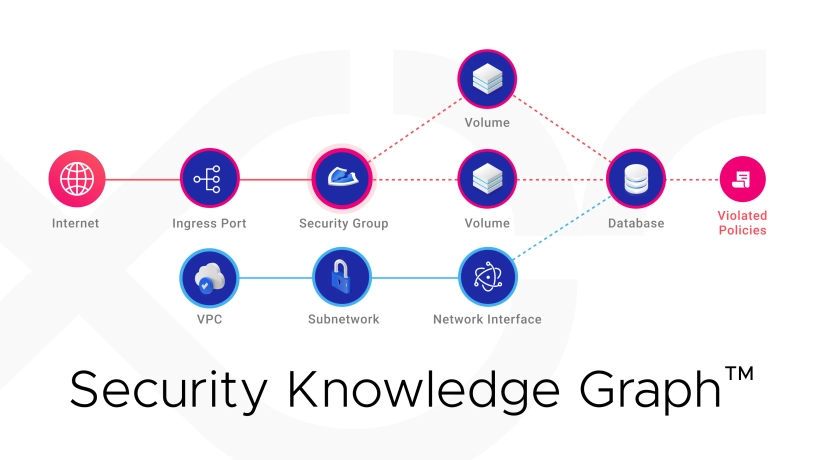
When securing a company’s cloud environment, it is easy to overlook applications, users, and connections between them.
A modern company uses many applications and services for supporting the day-to-day tasks of employees, whether those are:
- source control applications,
- project management tools,
- HR tools,
- endpoint security products, or others.
All of these additions in employees’ workflows become a part of the company’s digital footprint and need to be taken into consideration when assessing the robustness and the cloud security posture of your infrastructure.
A knowledge graph is the perfect tool to accomplish this. So, let's see how you can do it.
What is the Security Knowledge Graph™?
The Cyscale Security Knowledge Graph™ is a data model based on deep understanding that maps cloud assets and their relationships, as well as information from adjacent data sources to provide context-aware security and deliver a comprehensive security analysis over an organization.
Google uses a Knowledge Graph to power the results of its search engine by keeping a database of billions of records.
That is how Google is able to answer questions accurately with context.
The Cyscale Security Knowledge Graph™ is an all-inclusive graph that provides correlations between all of your cloud assets, as well as other apps and systems that may affect cloud security posture, and automatically pinpoints security issues.
The graph is more than just a way to visualize assets and systems; it uses context to identify relevant vulnerabilities.
Why use a Security Knowledge Graph™?
You could go through sets of configuration best practices and verify them against each cloud resource.
However, when looked at in isolation, a resource may be misconfigured, but the relations it has with other assets, as well as its position in the network (for example, if it’s in a private network or if it is Internet-facing) may greatly influence the criticality of the situation.
The Security Knowledge Graph™ is built on top of a graph database that contains nodes and relationships instead of rows and columns to create comprehensive graphs.
Below, you can see an example of a Security Knowledge Graph™.
Notice how a very complex system with intricate relationships and hidden vulnerabilities is so much easier to understand and observe when looking at it in a graph.
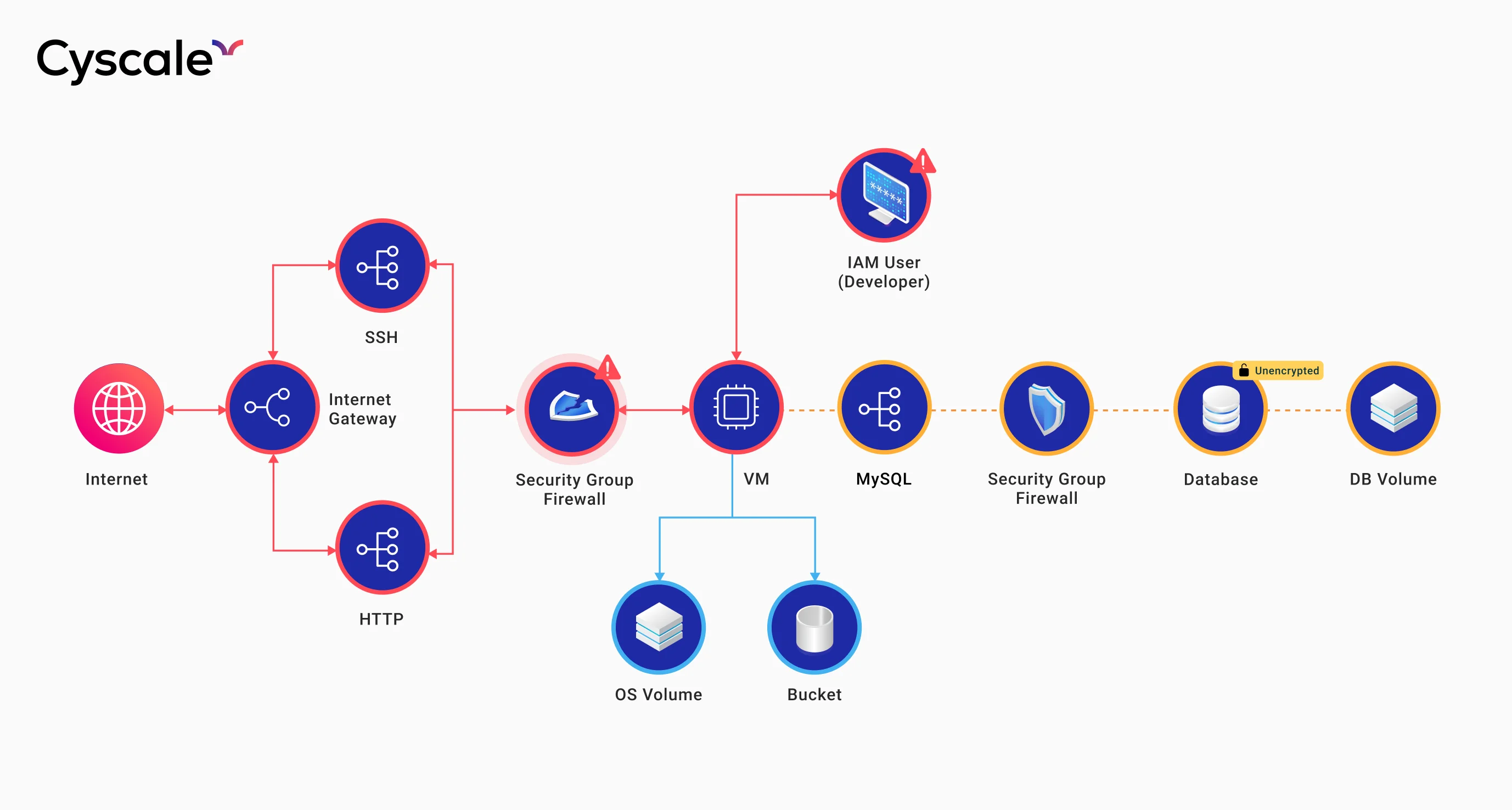
Are you unsure if you need the Security Knowledge Graph™?
Let me show you why you do!
Read the following scenarios to see if you can find your company in any of the situations described.
Scenario 1: HR and identity providers
An employee joins the company and is onboarded using an HR management tool, such as BambooHR or Workday.
An account is created for the employee using an identity provider such as Okta, through which they receive access to a production Azure account, GitHub, and many other sensitive applications that may end up having an effect on the company's cloud infrastructure.
When the employee leaves the company, they are offboarded from the HR portal, and the human resources department thinks the employee's accounts were completely deprovisioned.
However, since the Okta administrator did not correctly deprovision his account, the former employee still has access to production code.
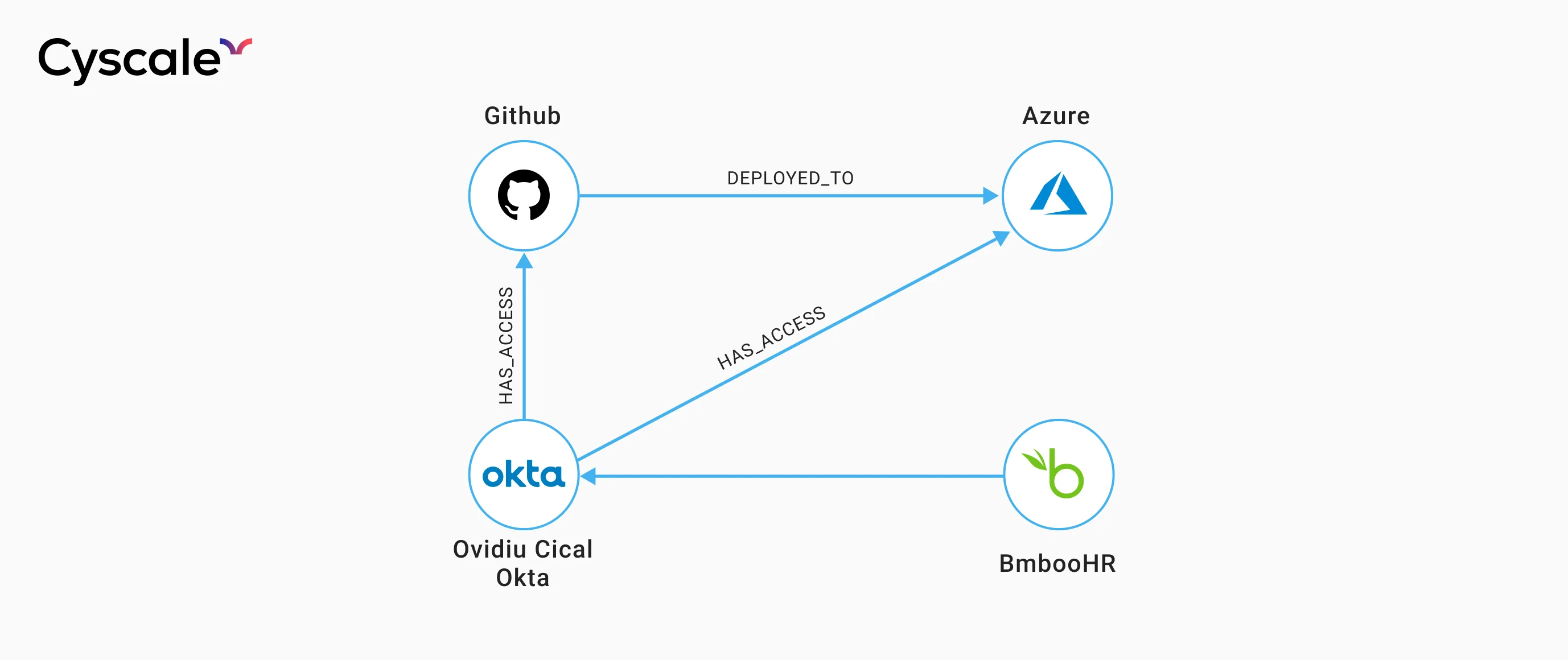
Scenario 2: Misconfigured permissions
It is not uncommon to have employees with very similar names within the same company. For example, assume user John Smith, a software developer, and Jonathan Smith, an accountant, are both employees at the same company.
They are mistaken for one another and instead of John, the software developer, it is Jonathan who receives the credentials instead, thus gaining access to a sensitive account.
While trying to understand the reasoning behind this, Jonathan explores the account and accidentally deletes a resource from the cloud.

Scenario 3: False positives in vulnerability scans
A company uses Tenable or CrowdStrike, endpoint vulnerability scanners.
A virtual machine running an application with Log4J has the Log4Shell vulnerability. As a result, critical alerts are generated, and the software engineers will prioritize this issue over other current vulnerabilities.
However, Log4J is only running in a private network, not accessible from the Internet. The issue still needs to be addressed, but the severity is high instead of critical.
Instead of securing Internet-facing applications and devices, engineers are distracted by less essential tasks due to contextless alerts.
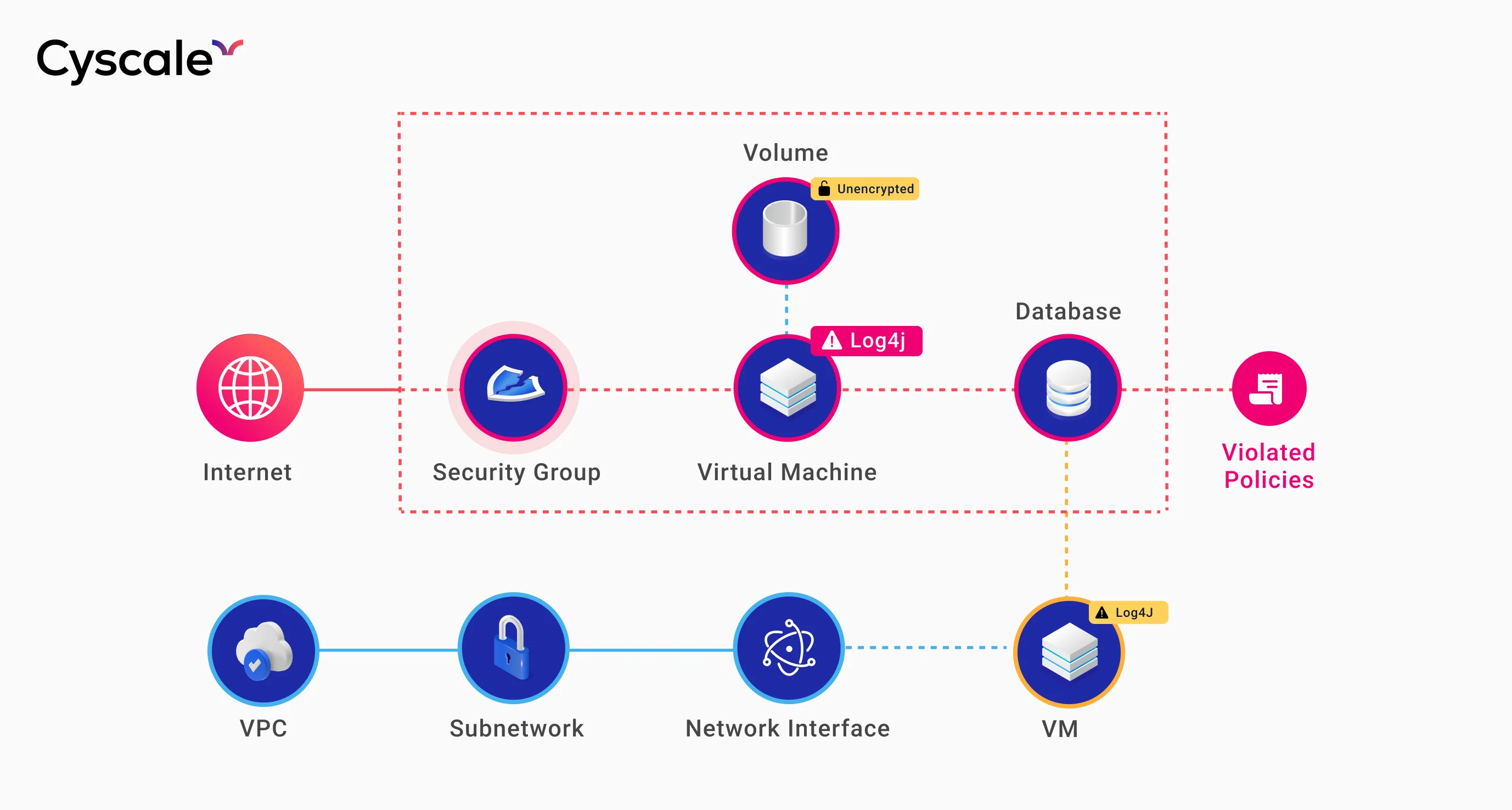
Keep in mind that these are some examples. There are plenty of other situations where contextual awareness is the best way to notice existing vulnerabilities before they become breaches.
Cyscale is leading a continuous effort to integrate as many services and tools as possible and expand the Knowledge Graph to cover a great range of security scenarios.
We currently integrate with:
- AWS (Amazon Web Services),
- Google Cloud,
- Microsoft Azure,
- Alibaba Cloud,
- Okta, and others.
There are many more integrations to come soon: AWS SSO, GitHub, Azure AD, Kubernetes, GSuite.
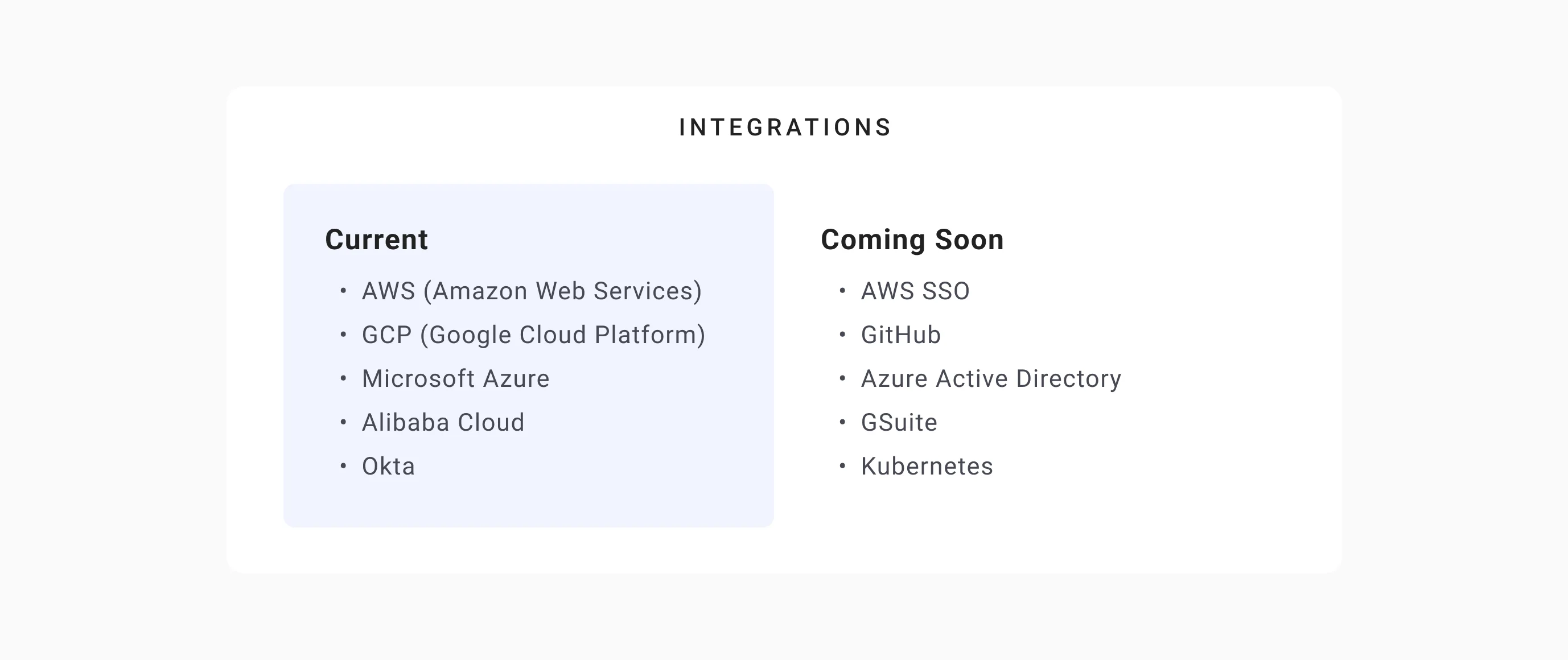
Cloud Security Analyst at Cyscale
Sabrina Lupsan merges her academic knowledge in Information Security with practical research to analyze and strengthen cloud security. At Cyscale, she leverages her Azure Security Engineer certification and her Master's in Information Security to keep the company's services at the leading edge of cybersecurity developments.
Further reading
Cloud Storage
Misconfigurations

Build and maintain a strong
Security Program from the start.
Cloud Compliance in
2025: An In-Depth Guide
The whitepaper talks about ISO 27001, SOC 2, PCI-DSS, GDPR, HIPAA.
Download WhitepaperShare this article
Stay Connected
Receive our latest blog posts and product updates.
TOP ARTICLES
Product
Our Compliance toolbox
Check out our compliance platform for cloud-native and cloud-first organizations:

LATEST ARTICLES
What we’re up to

Why the world needs Cyscale in a post-Wiz era





